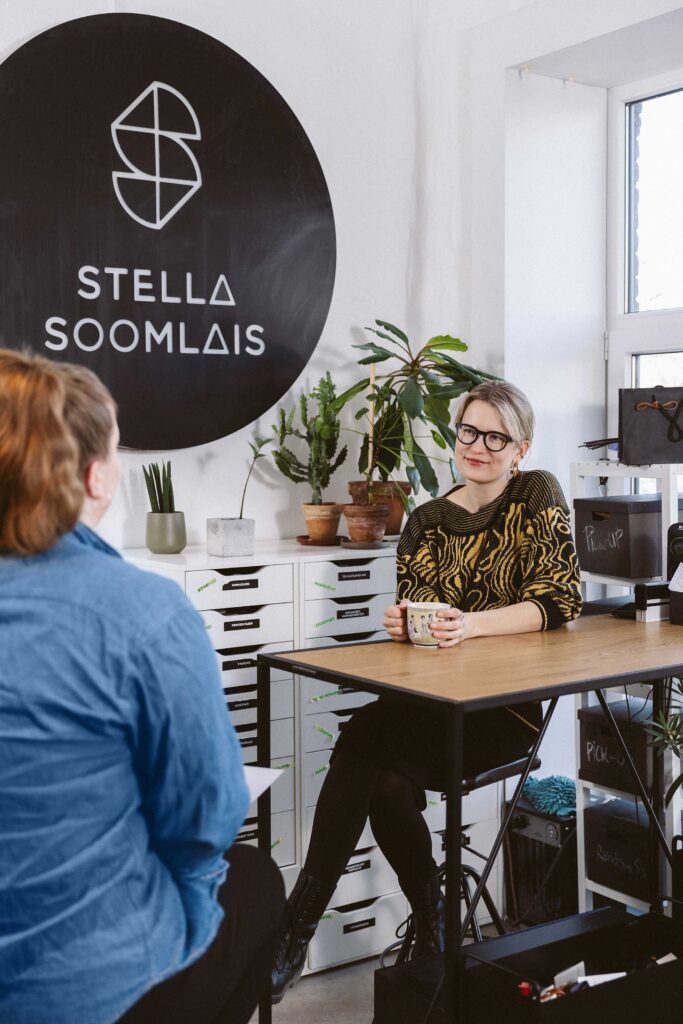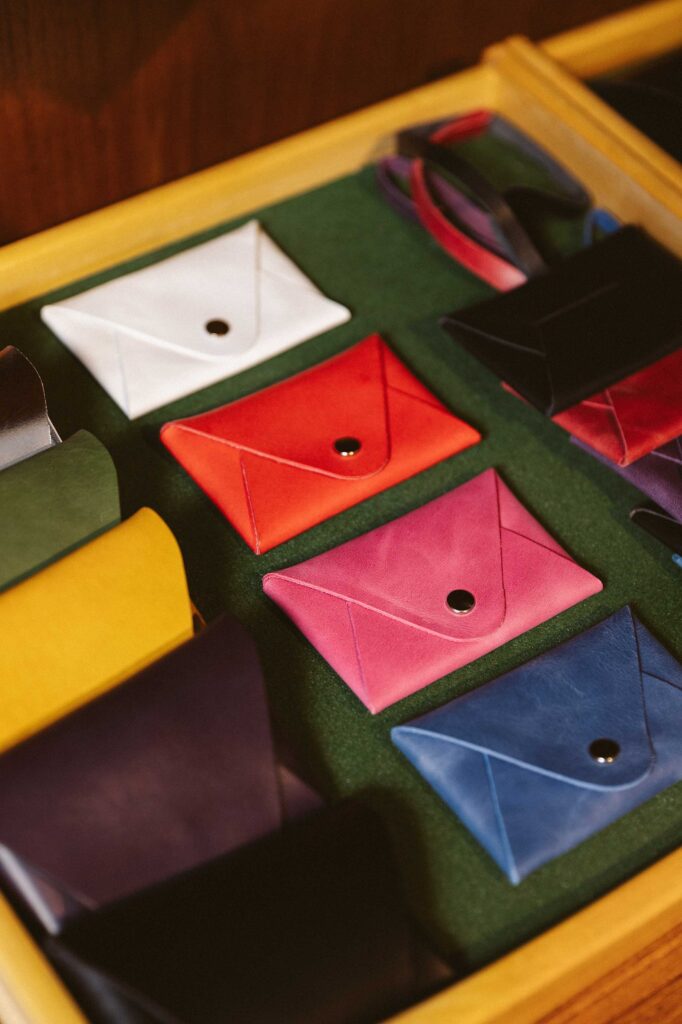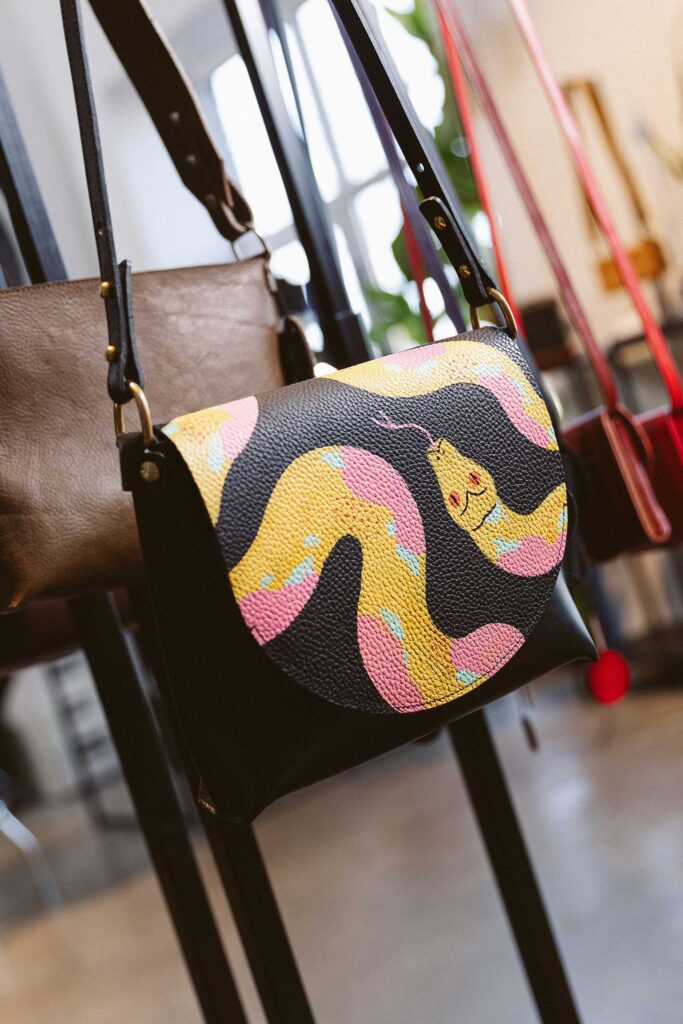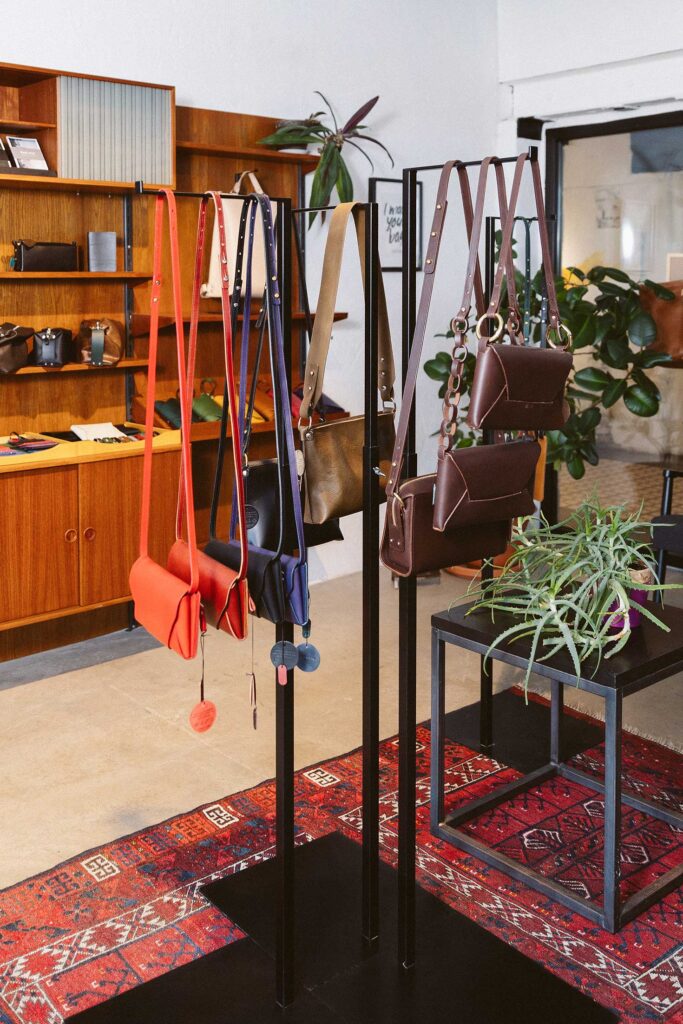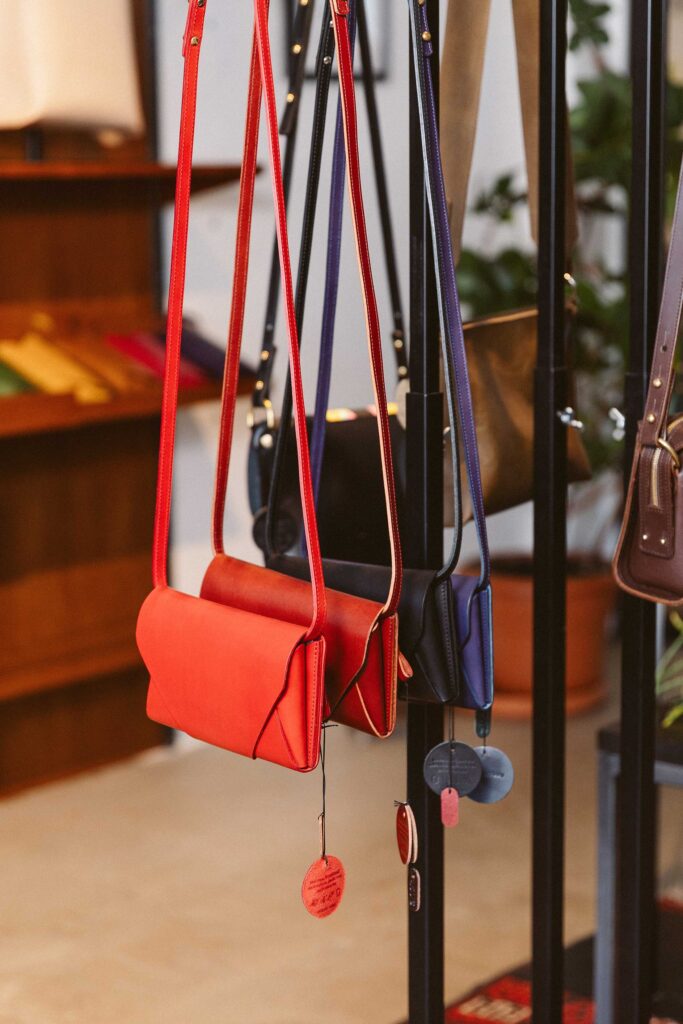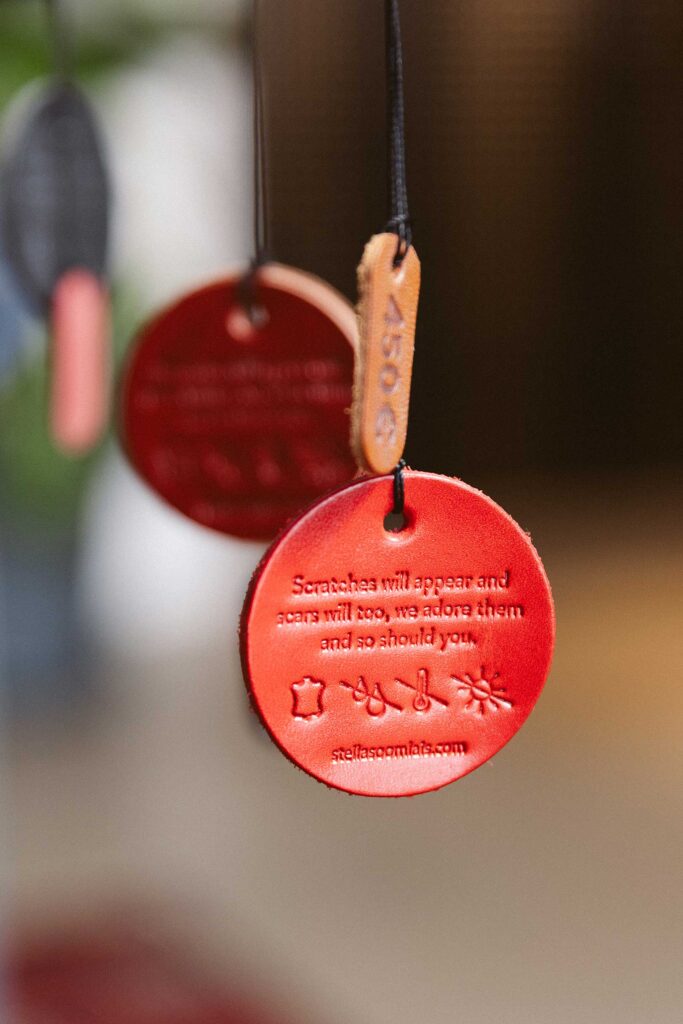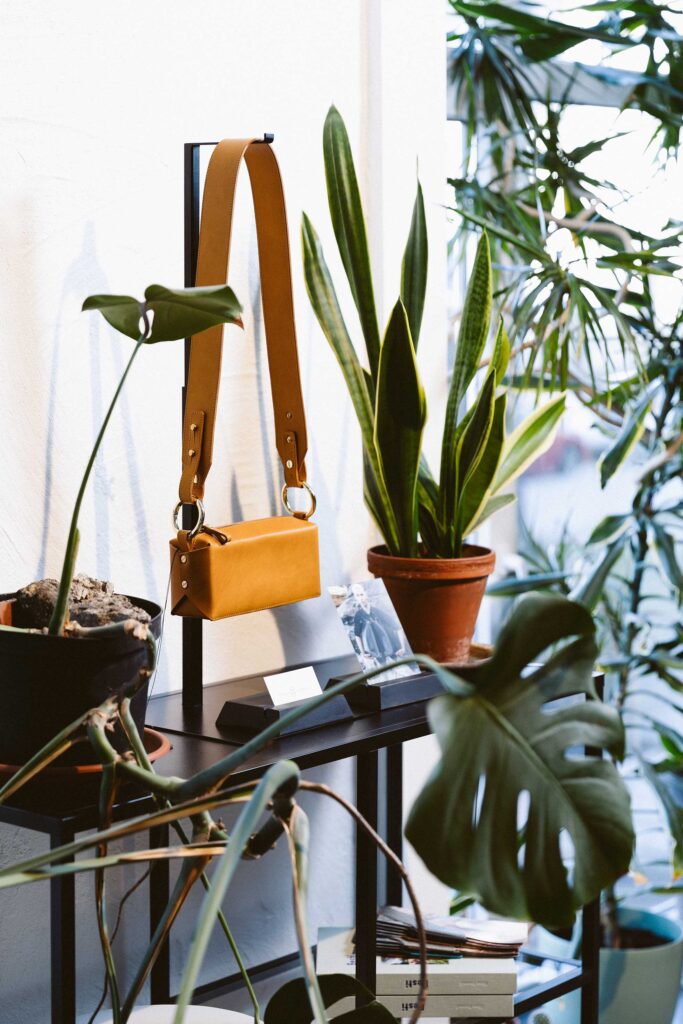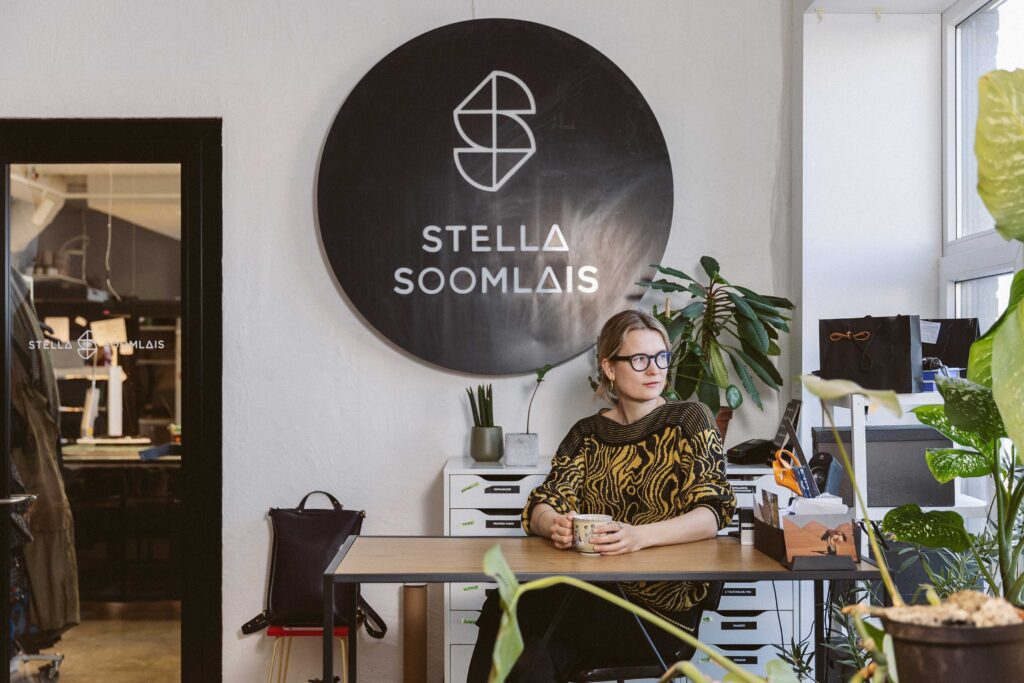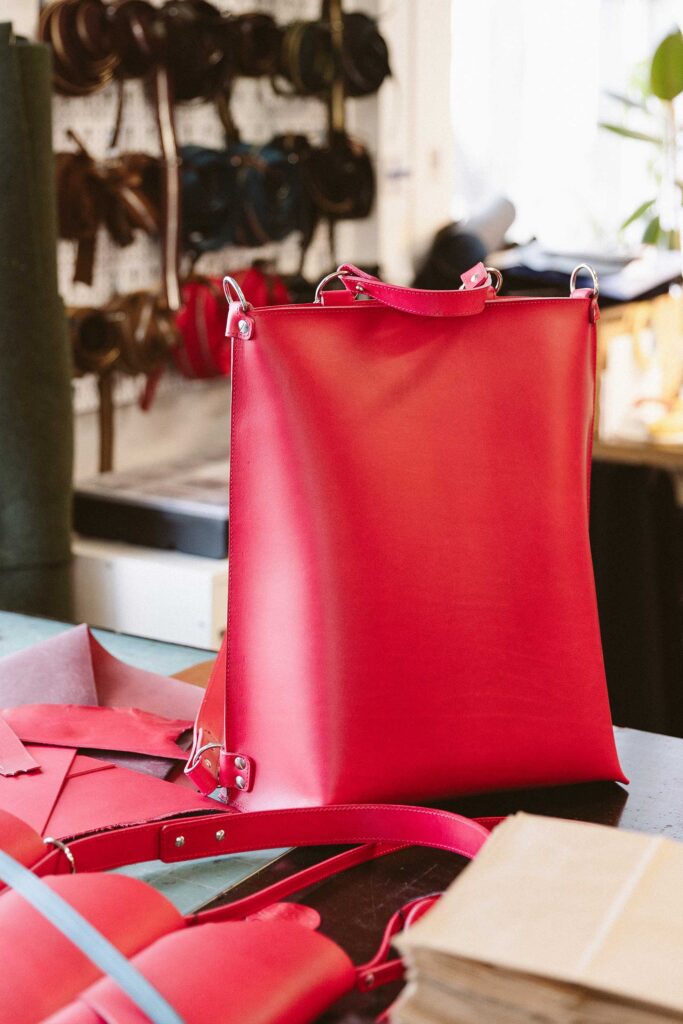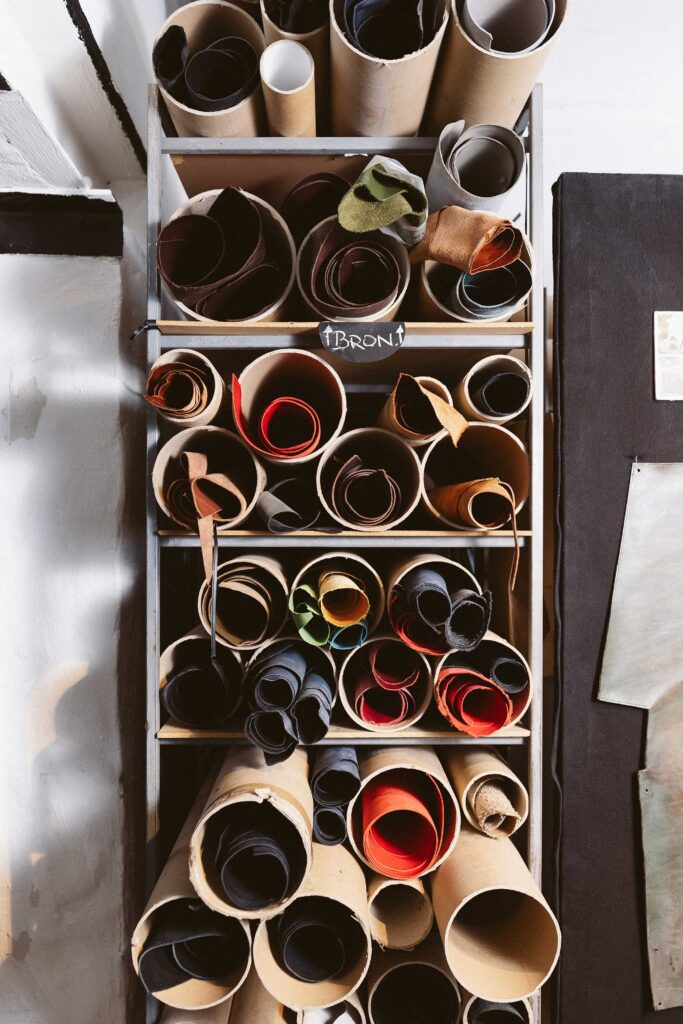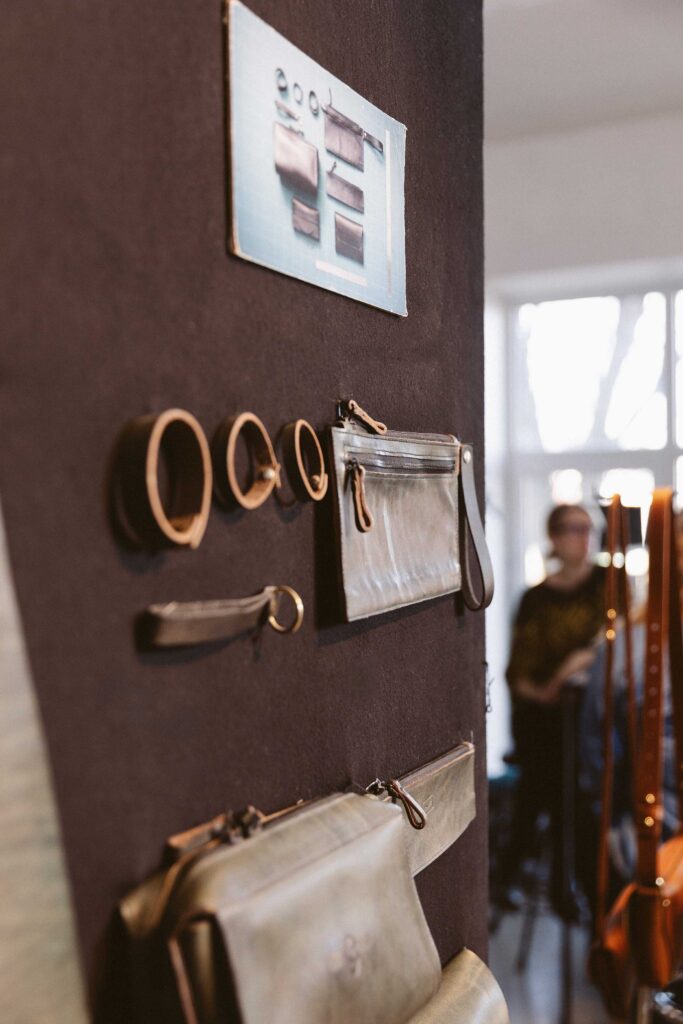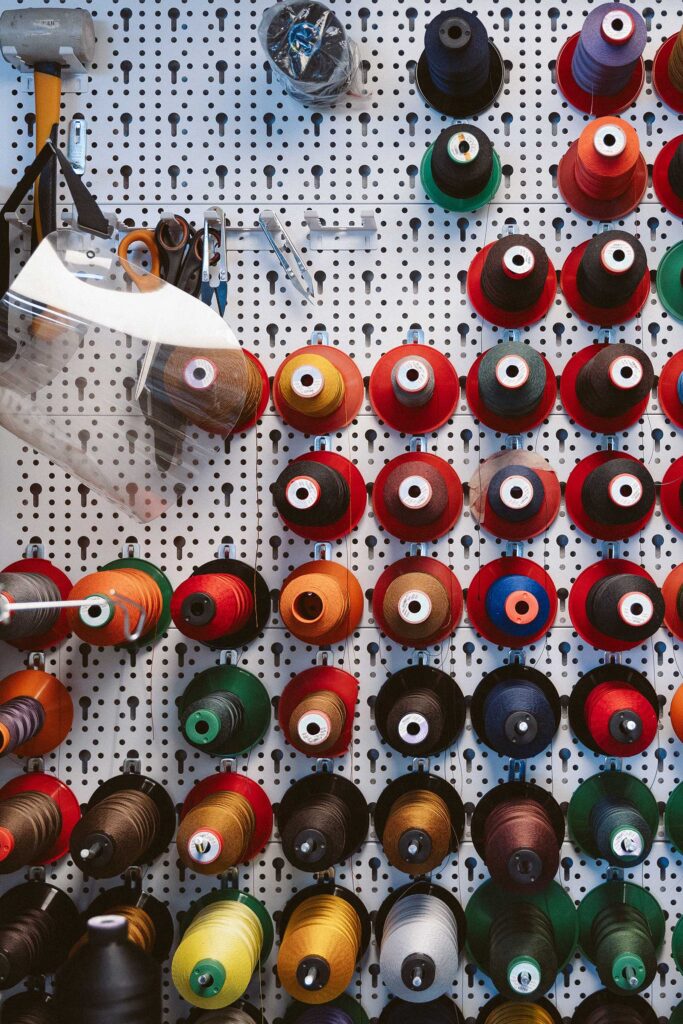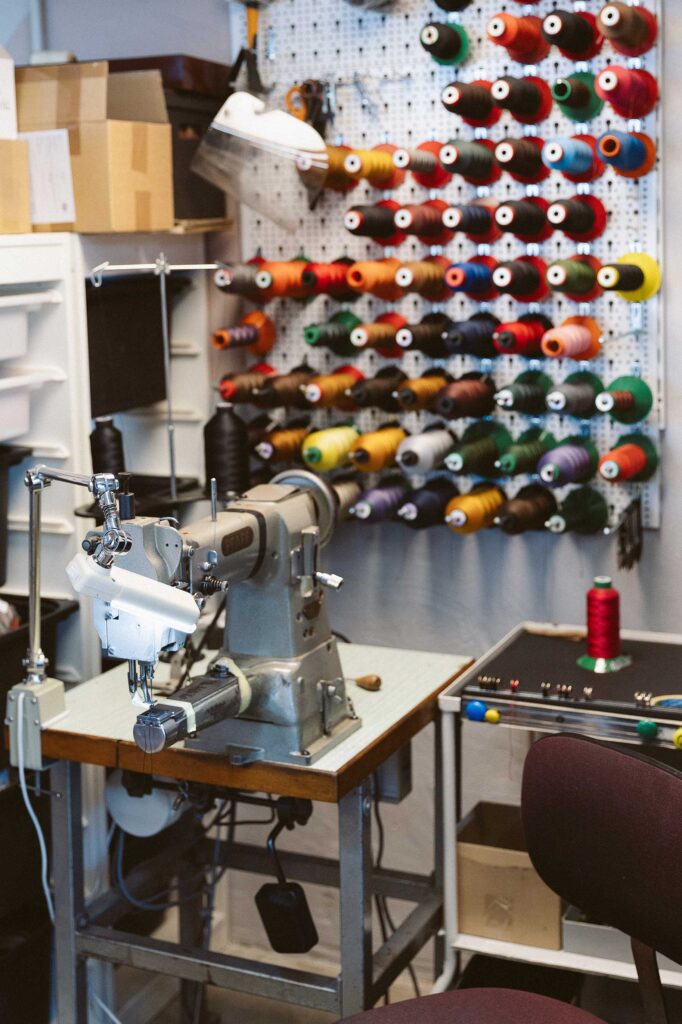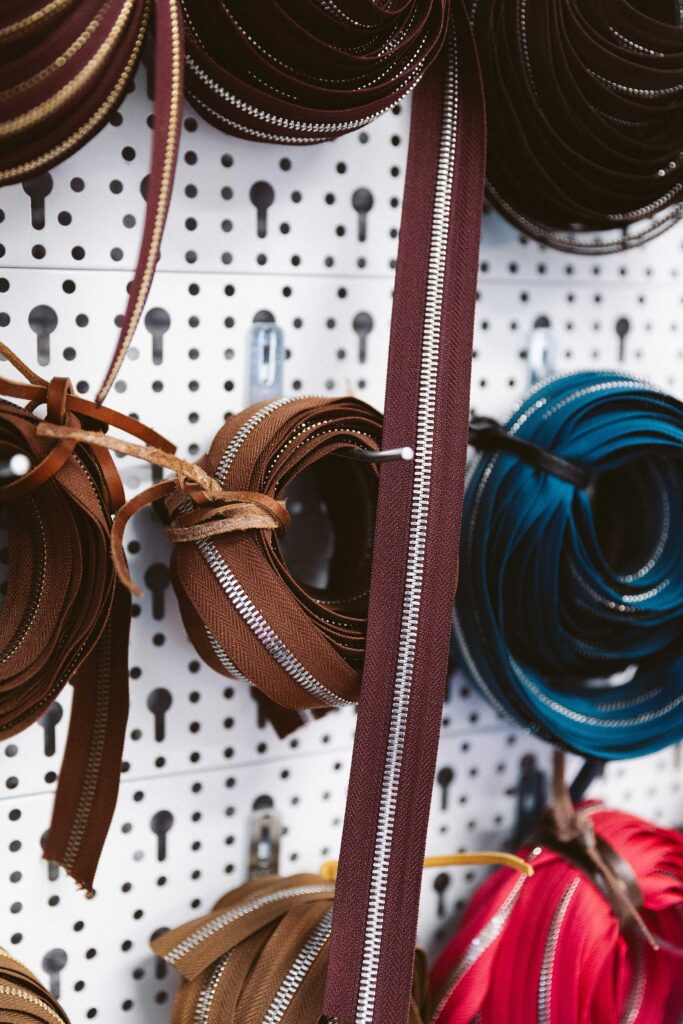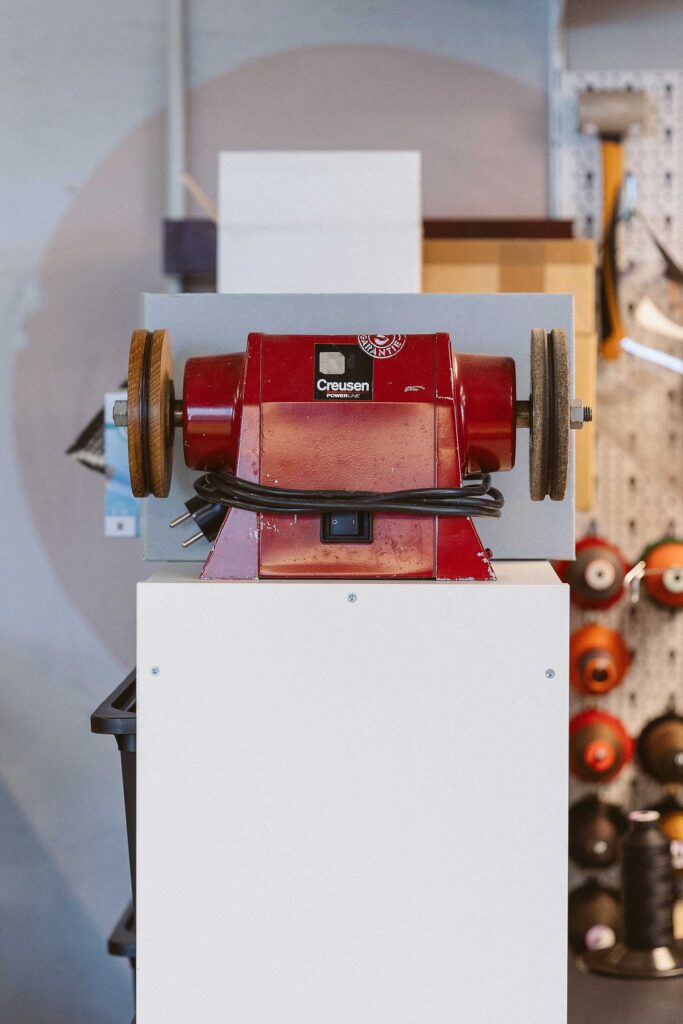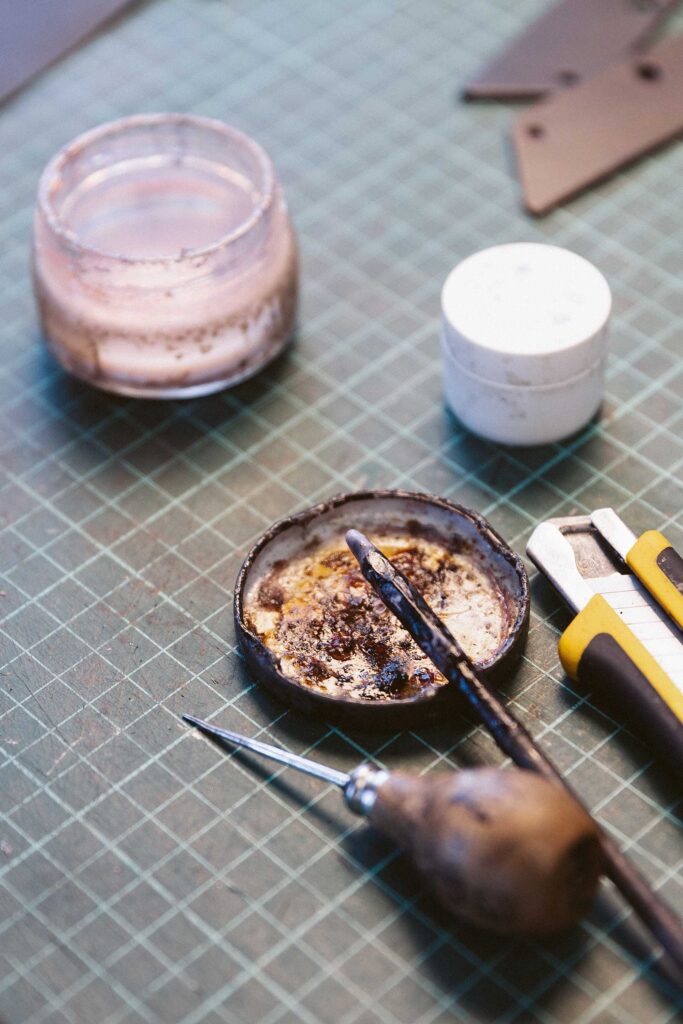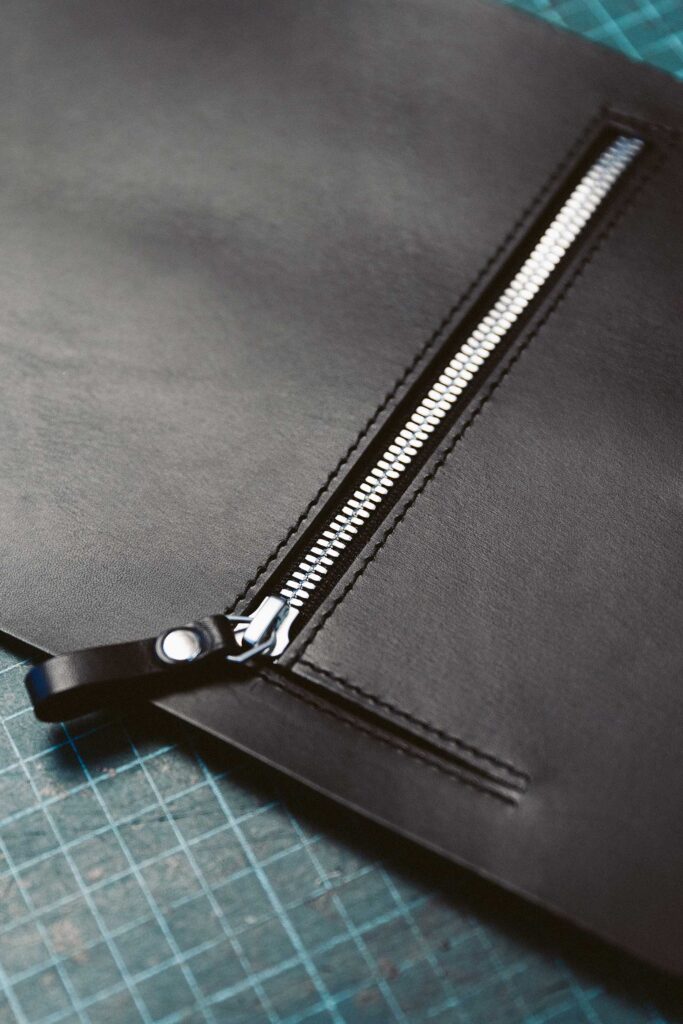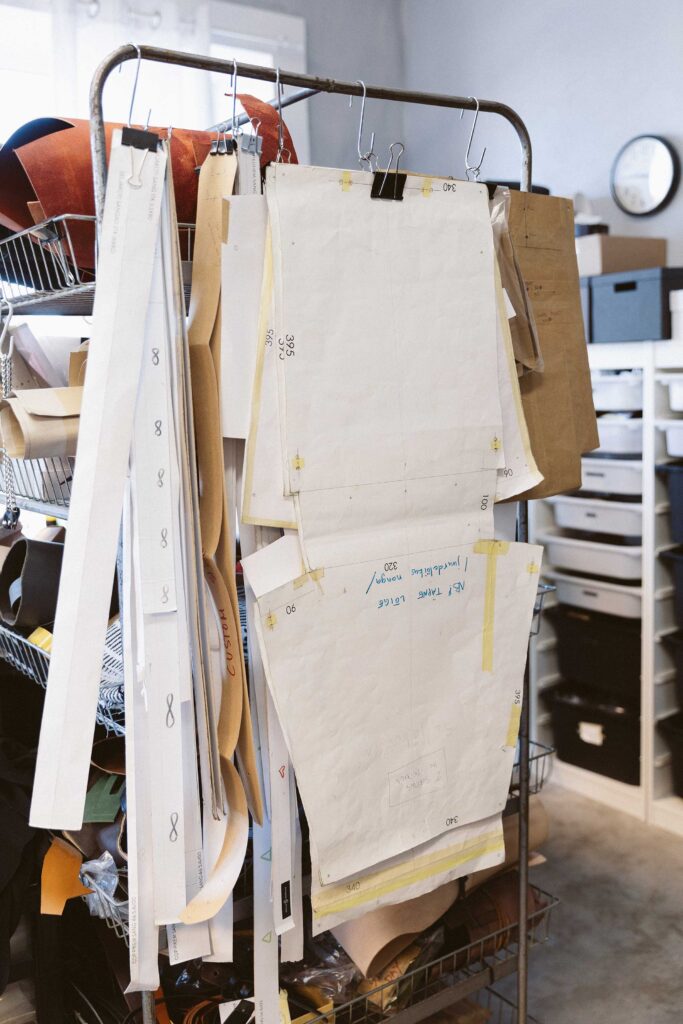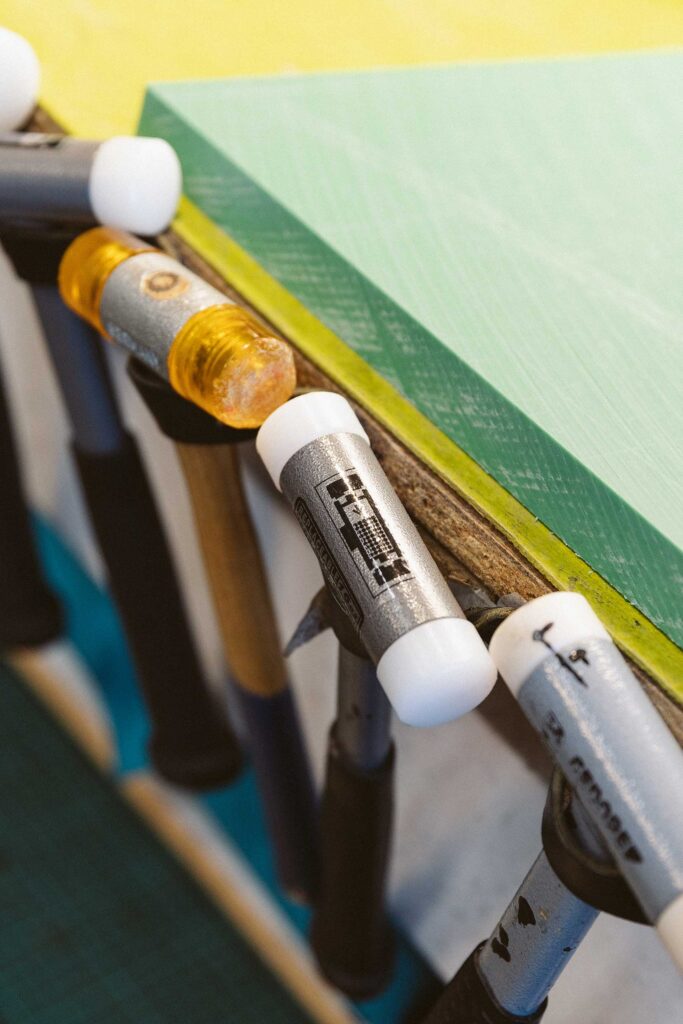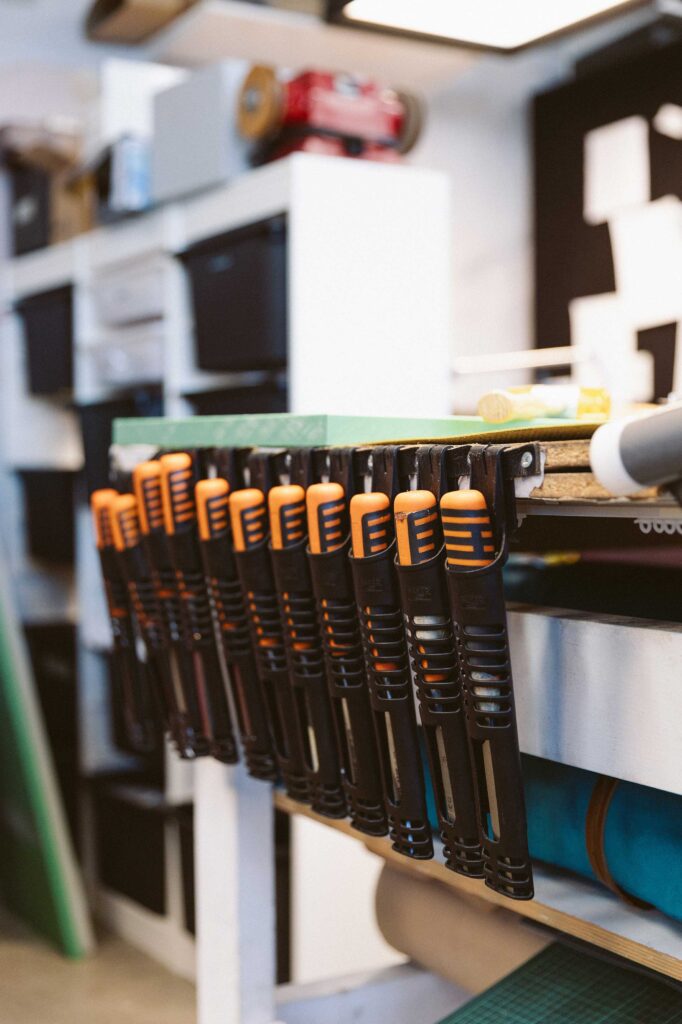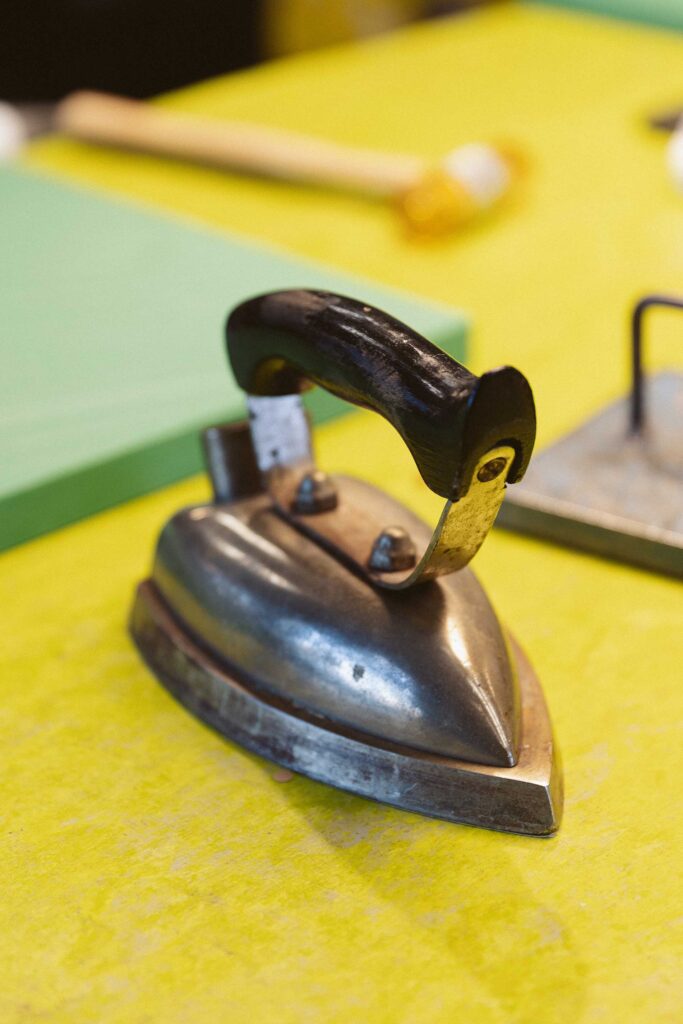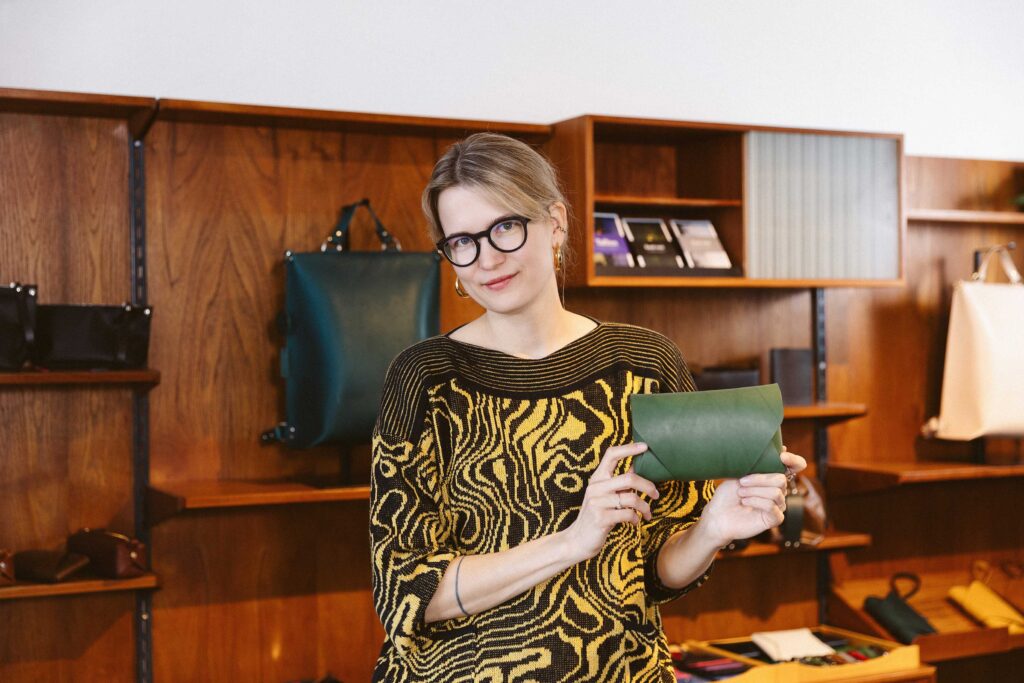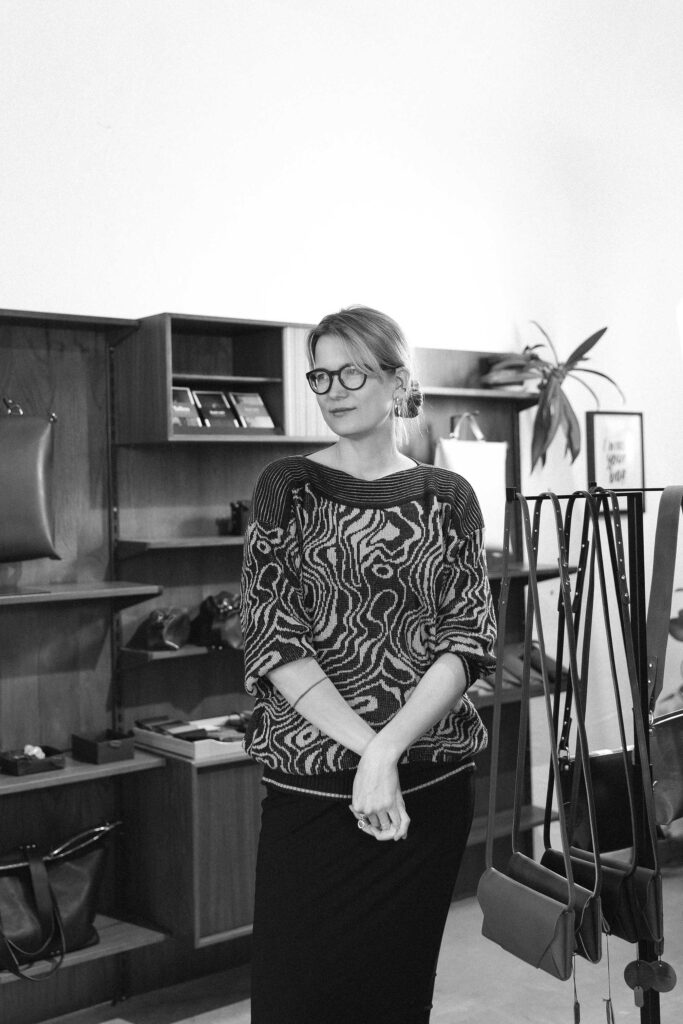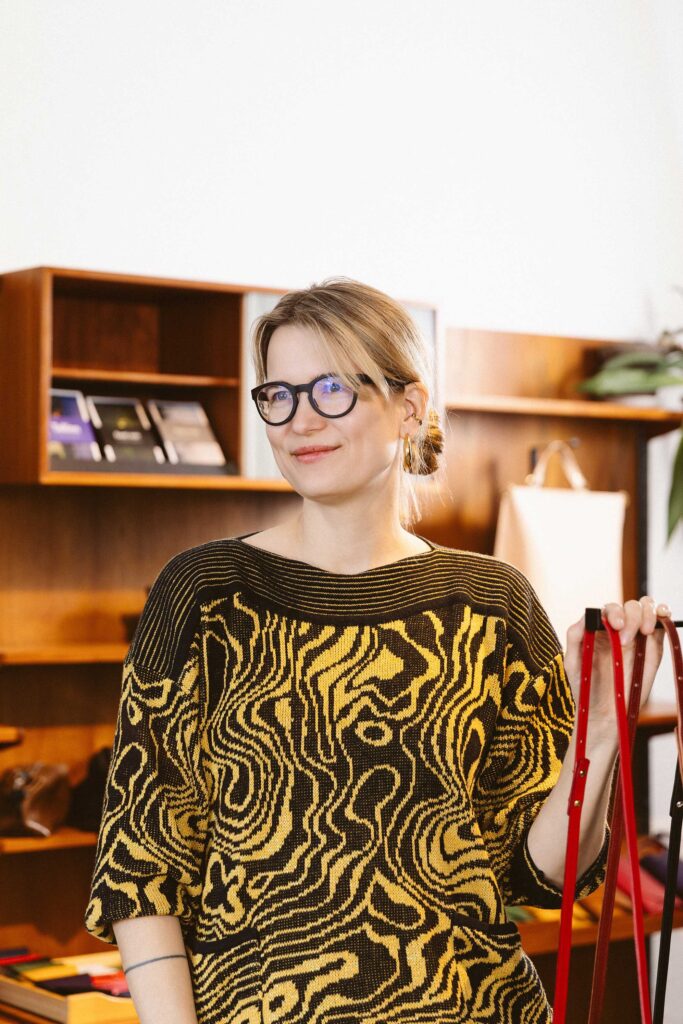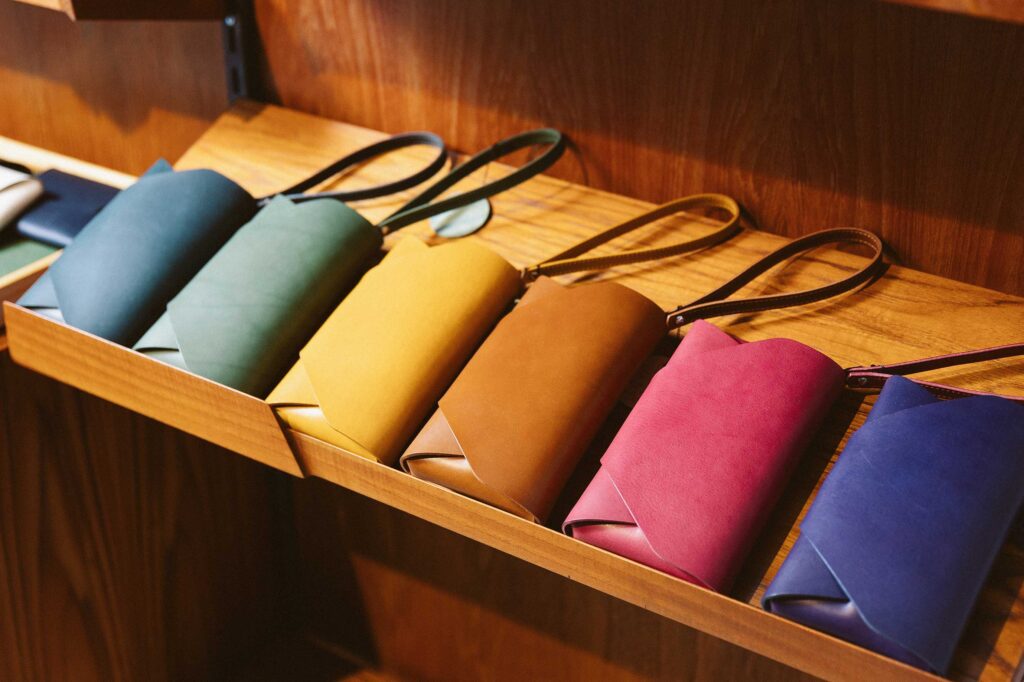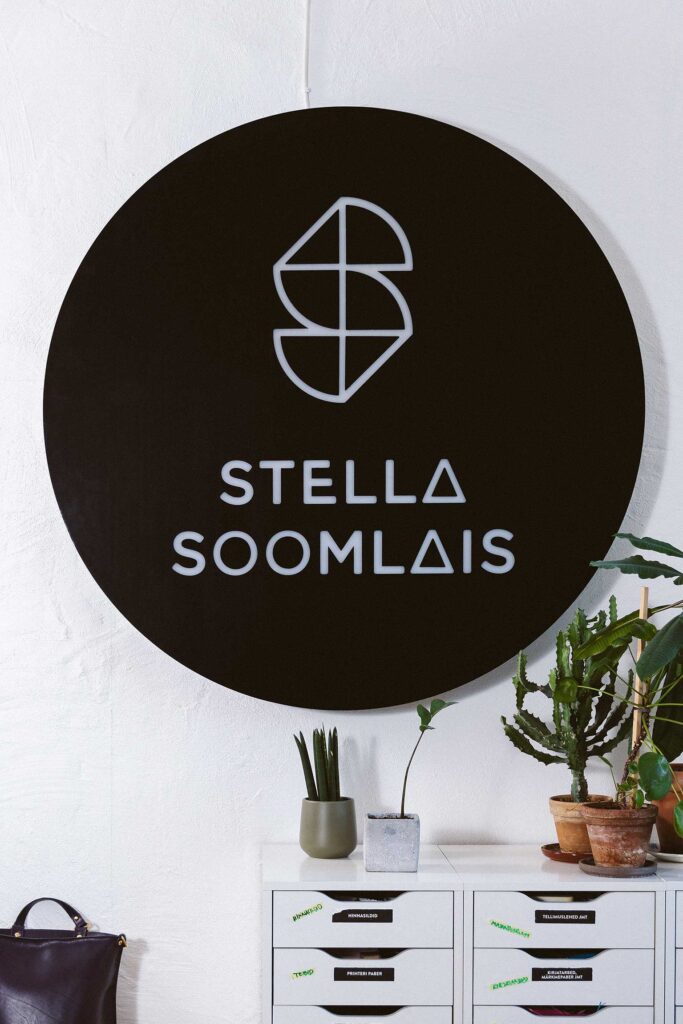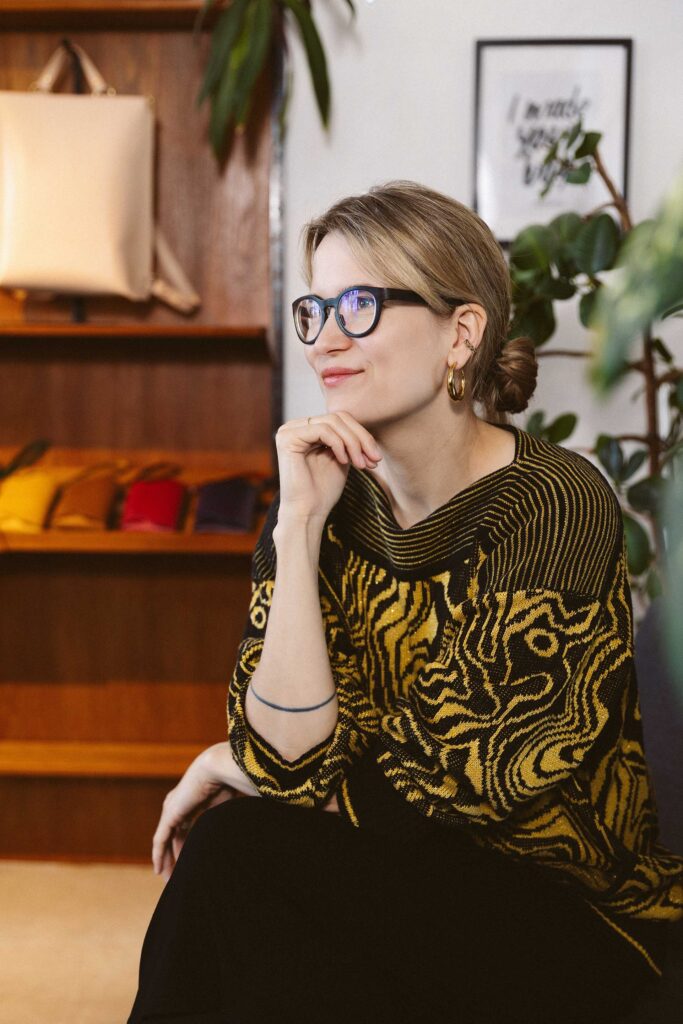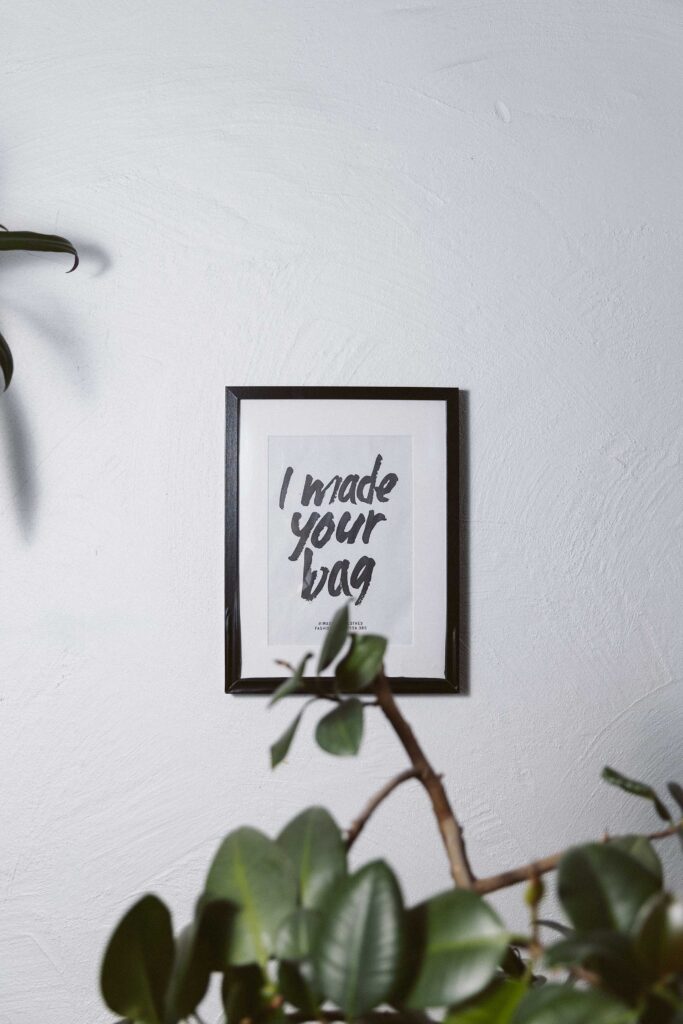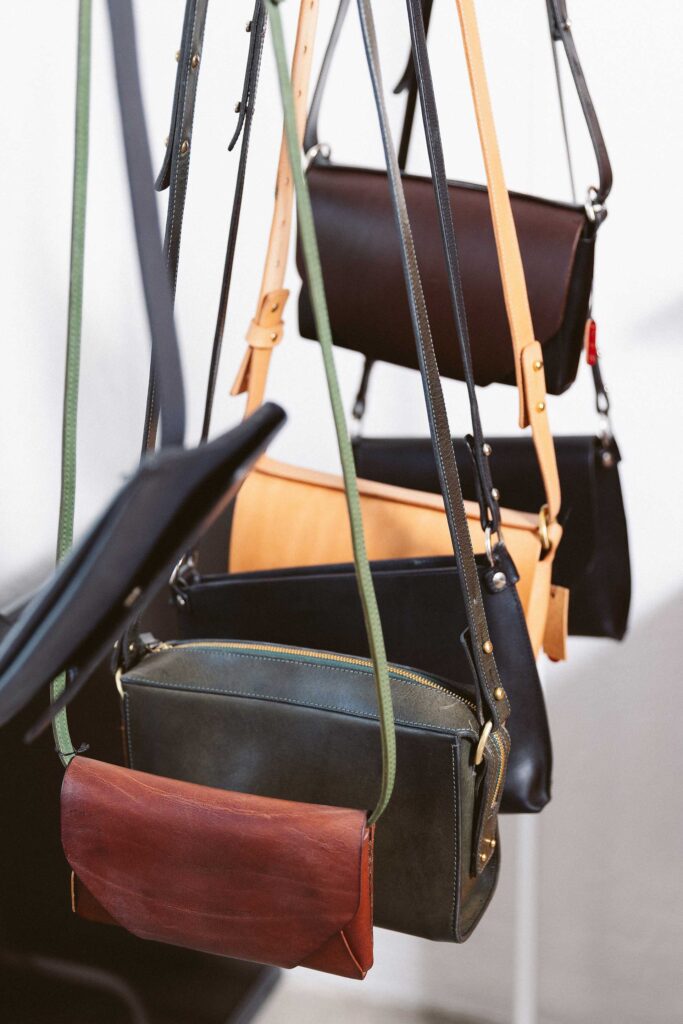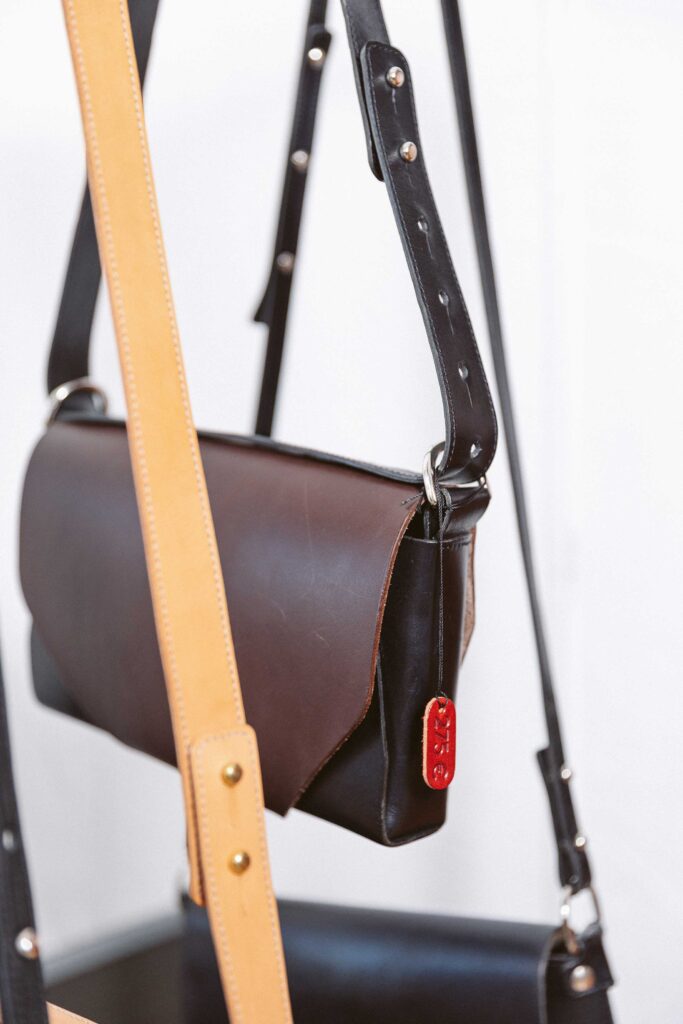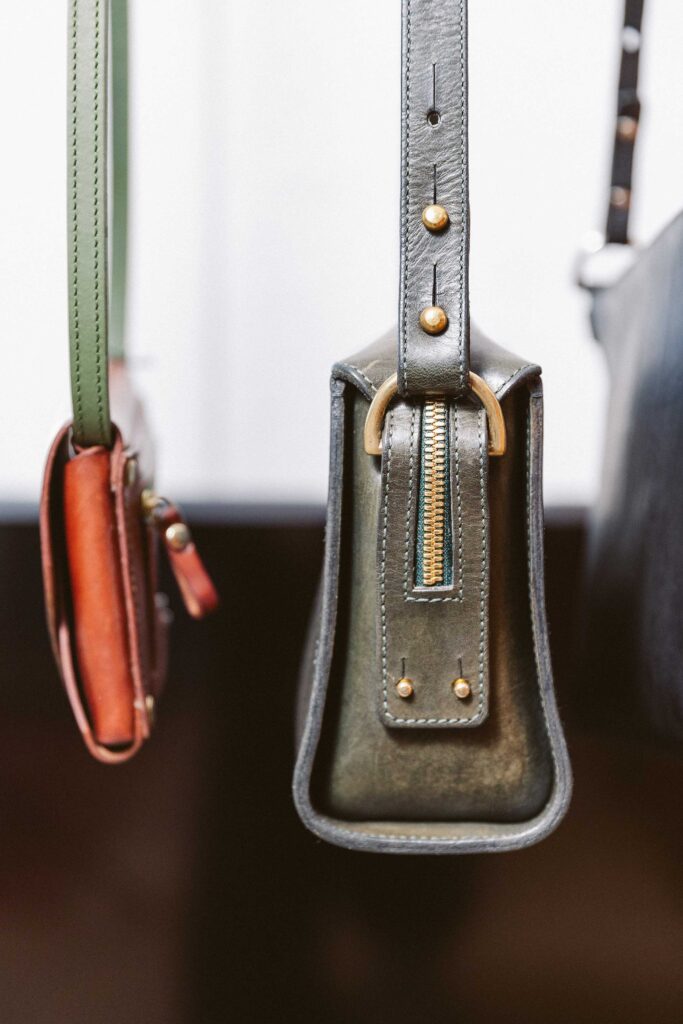We moved here in May 2022. Initially, it was meant to be a “temporary space” until the new one was ready. It’s now 2025, and only just now has construction started on the new space here in Telliskivi. I’m really hoping we can move in by the end of the year or early next year.
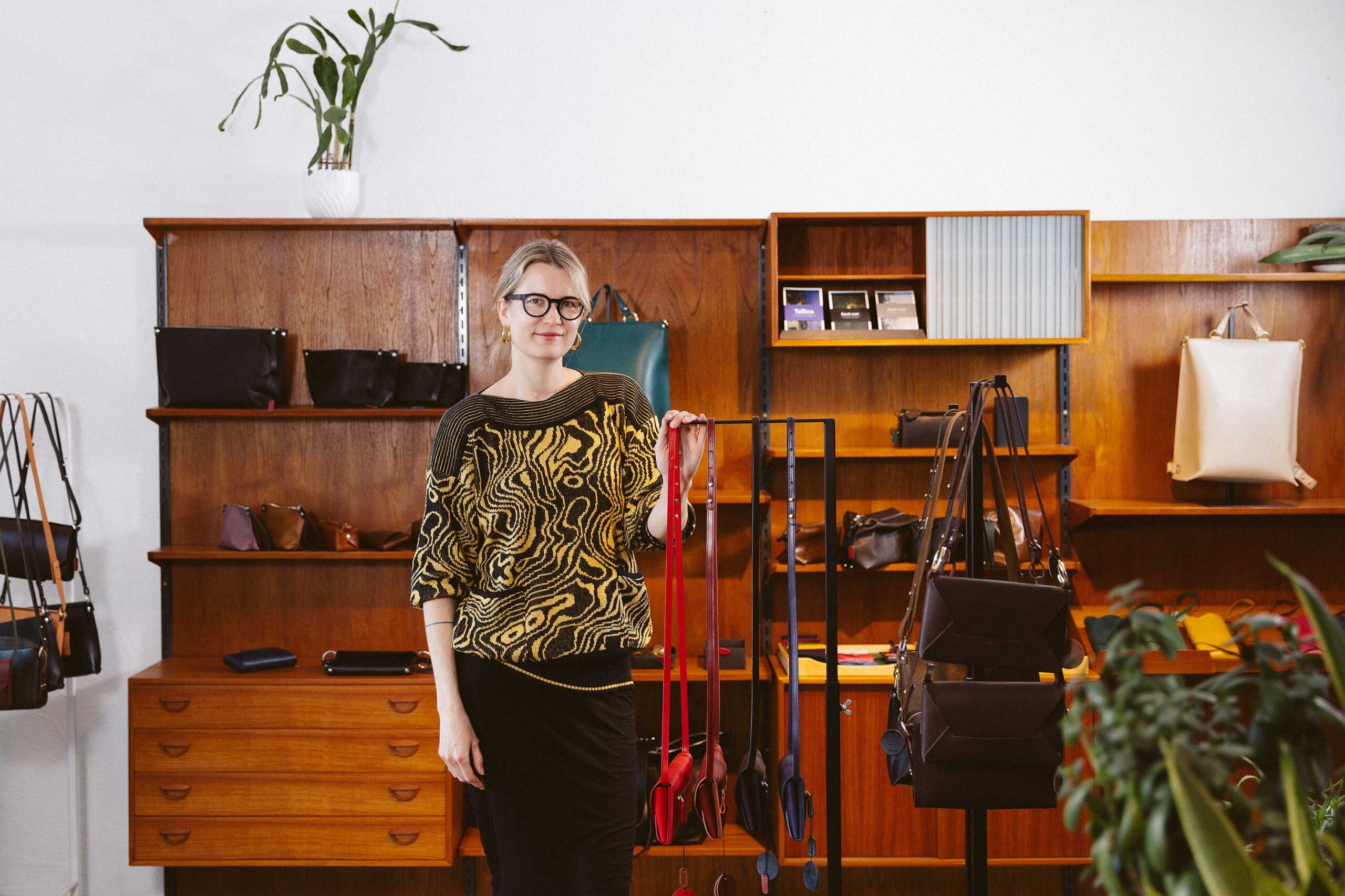
Stella Soomlais: Out of Respect for Materials Comes Sustainable and Functional Design
05.06.2025
On an early spring morning, we were greeted in Stella Soomlais’s cozy studio by the creator of the brand, Stella Runnel. Her warm smile and down-to-earth presence set the tone for a conversation about design, the circular economy, creative drive, and how to shape one’s life’s work from a place of passion.
We’re here in your studio in Telliskivi. How long have you been here and what brought you to this location?
What are your expectations for the new space?
They’re high. Reet Aus and I are moving back in together. We once shared a studio in Kalasadam, and now we proposed to Telliskivi that the graffiti-covered substation opposite the F-building could become a home for sustainable design – with each of us having our own studio and a shared shop. Since our clientele overlaps, I hope this will also boost sales for both of us.
At the same time, I’ve learned in life that plans can shift or even fall apart. We’re staying grounded: if this plan doesn’t come to fruition, that’s just how it is. But we’re both looking forward to it immensely.
The new space will definitely bring fresh energy – we’ll be able to design everything to suit our workflow and make the space pleasant for workshop and tour visitors. Right now, it’s more like, “try to squeeze in somehow.”
Since I had twins in the meantime, I’ve barely spent time in the studio and don’t even have my own desk. I come in, talk things through, and head off again. In the new place, I’ll finally have my own little corner, set up exactly the way I like it. I’m very excited – I always need something to look forward to.
How did you find your way to design and leatherwork? Do you remember the first moment you felt this was your path?
It’s quite typical – little girls playing with their mother’s bags and shoes – that was me too. But I actually didn’t know for a long time that you could study this field in Estonia. My path into the world of leathercraft opened through a friend who enrolled in the leather department at the Tartu Art School. Through her, I came to understand that this field encompasses bags, shoes, and books – it’s not just some “brown thing in the corner,” as we sometimes jokingly call it within the field. Thanks to her, I got the idea to apply there myself.
My “eureka moment” came during the entrance exams when I realized this is exactly what I want to do. During the tests, I dreamed of one day having my own studio, starting work at noon, and gifting everyone I know with something I made. Reality turned out a bit different, of course, but I do have my own studio and I’m still doing this work.
I must admit, I had doubts by the end of the first year. All my high school classmates had chosen more “practical” fields like economics or law. I even retook the national exam and got into law school, but luckily I realized that wasn’t the path for me – especially since today it’s contracts and paperwork that I procrastinate on the most. Another moment of doubt came in my third year when I became deeply interested in anthropology. But I realized it was most reasonable to finish my degree and think later about how to combine those interests.
So yes, I’ve had doubts, but the field has continued to open up in new ways. I think that no matter what I might have chosen, any discipline offers a lot if you really dive deep into it.
So the idea for your brand started already during your entrance exams?
Yes, it was more about an entrepreneurial urge – the desire to initiate and create something myself. That drive had actually been there even earlier, but I hadn’t yet visualized it in a concrete form.
When I graduated from university, there really weren’t many job opportunities in Estonia. Erasmus also didn’t offer the kind of strong internships it does today, so going abroad to gain experience wasn’t easily accessible. Basically, my only option was to try entrepreneurship and see where it led.
If I were to start again today, I would definitely first explore working at different companies, learn how others build their systems, gain experience and capital, and maybe only then start my own brand.
Today, do you feel more like a designer or an entrepreneur?
I think it’s a combination. But I’m definitely a better designer than entrepreneur. If I made decisions purely from a business perspective, we wouldn’t be sitting in this studio doing this interview today. The design side is still a very important and heartfelt mission for me.
How would you describe your designs? What characterizes your work?
At the core of the Stella Soomlais brand is circular thinking and design. I focus on functionality – sometimes even multi-functionality. I work toward giving both the product and the material as long or circular life as possible. I like to think through the full lifecycle of a product: what happens after I sell it; how customers use it; how it can be maintained during its use; what happens when the customer no longer uses it; and what becomes of it when no one needs it anymore.
In my design process, it’s essential that no detail is purely decorative – everything must serve a function. If you placed my work on the axis between fashion and product design, I’d definitely be on the product design side. Function always comes first; fashion-oriented thinking takes a back seat.
How did you arrive at circular design – was it a natural evolution or a conscious decision?
It came gradually. When I started, I already had a strong technical foundation because my studies at the applied arts college lasted four years. Now, as head of department at EKA, I truly miss that fourth year – at the academy, the bachelor’s program lasts only three years.
At Tartu Art School, I was able to make very complex products, but I didn’t yet consider what came next. For example, what happens if a customer’s bag zipper or pocket breaks, or a jar of honey breaks inside? These are real things that have happened. Through my own sweat, tears, and frustration, I came to realize I had created something that, in a sense, could be thrown away because fixing it would be expensive, time-consuming, and complicated. That was one thing that pushed me to change the concept.
Another major influence was my former partner, Marko Ala, who now leads Oot-Oot. As two designers living together, we had countless discussions about how to make the world better.
While working on my Master’s thesis, I analyzed how I might build my brand: what could be my niche and role. There were already so many handbag brands – why should anyone start another? That’s when I realized that circular thinking and sustainability were practically absent in that context. There were durable leather goods, yes, but few offered repair or reuse options. That realization pushed me toward circular design.
The concept I now work with grew directly from my 2010 thesis, which focused on developing a business model. That model has now materialized – only in a more detailed form.
Circularity is also deeply connected to my life philosophy. I come from a generation that herded cows and drank fresh milk in the barn. I’ve seen how our grandparents – partly out of necessity, partly out of logic – sought to use every material to its fullest, whether food or something that could be turned into a useful item.
My respect for materials that come from nature is deeply personal and ingrained in me. At the same time, I’m also a modern person who has traveled and experienced a different world – abundance and overabundance. That contrast is what drives me, as a designer, to ask: how can I influence the world through my profession?
If I had studied law, I might have found the same question, just from another angle. But since I have a background in design and a degree in leatherwork, I’ve been looking for practical ways to implement these ideas. I’ve stayed in this field because I feel I can’t move on until I’ve fully tested my concepts.
What is your personal relationship with time?
Time slips away. Especially now, because I have 2.5-year-old twin boys, and I feel time flowing through my fingers like sand. For two reasons: they are growing up both slowly and quickly at the same time. Their childhood, during which I can be there to support them, feels like it will pass in the blink of an eye.
On the other hand, it’s also very important for me to have my own time to fulfill myself. The need to achieve is, for better or worse, hardwired into me. With small children, there are so many moments when I simply don’t have time for myself. It often feels like I’m just treading water, without any flow. And then I feel like I haven’t used the time I’ve been given, because I’m simply too tired. That’s my internal dialogue – this is just the season I’m in, and that’s okay.
When it comes to time – something that also resonates with my brand – I really love long-lasting relationships, whether in friendships or traditions passed down through generations. Longevity is definitely something I deeply value.
How does a Stella Soomlais bag come to life, from beginning to end?
It often starts from a functional need – either feedback from clients or a realization that a new product could complement an existing model. Since we offer maintenance services, we get to see how our products evolve over time, and we can identify which models have potential to be further developed.
Still, everything always starts with the question: what do people really need, and where is it worth directing our time and energy in product development? We also evaluate what’s still missing from our current product portfolio. Right now, our process begins with a team discussion of the idea. Then a colleague makes a mock-up and a prototype. If the product is mature enough in terms of functionality, we test it internally in the studio first. If those tests go well, we have a few options: we either put the product in the shop and collect feedback, or we involve previous custom-order clients as a test group to gather their experiences.
Next, we offer the product with “early bird” conditions, gauge the interest, and continue development based on the feedback. We also often test new suppliers and materials. Sometimes we discover that a certain leather doesn’t wear as expected, and we have to start the process all over again. We’ve allocated about half of a team position specifically for product development. In truth, no product is ever fully finished – it’s a constant evolution.
Is there a product or project that you’re especially proud of?
Definitely the small handbag with the new name Shapeshifter. I’m very happy with this model because it really fulfills its purpose – it can serve as a presidential reception bag, a daily work or hiking bag, and even a travel bag. We’ve managed to achieve great multifunctionality with it – it offers a wide range of use cases, but it doesn’t look like a typical multifunctional product. All the extra features are cleverly hidden. Shapeshifter has also been very popular among our clients. True, there are still a few details I’d like to improve. Right now we’re working on a simpler version and seeing how that develops. This model has already inspired larger versions, which have brought us a lot of creative joy.
What role does collaboration play in your work?
Collaboration is very important to me. In fact, we work closely as a team on a daily basis, especially during the design process – bouncing around ideas is essential.
We’ve also done collaborative projects with artists and other designers. For instance, we’ve used leftover leather from Samelin, which artists have painted on. We’ve also collaborated with jewelry designers – currently, Claudia Lepik is working on her ideas with us. This is a core part of the Stella Soomlais brand: keeping things exciting for ourselves and offering something new and interesting to clients.
Let’s be honest – everyone in Estonia who has wanted a Stella Soomlais handbag has had the chance to get one. The first mass-produced bags we released under the brand are turning 10 this year. That means they’ve been on the market for a long time, and from a business perspective, it’s becoming increasingly difficult to maintain novelty.
What inspires you beyond product development itself?
In recent years, I’ve encountered so many sources of inspiration, but I haven’t had the time to process and synthesize it all. Thanks to EKA and the Erasmus program, I’ve had the chance to travel, see world-class exhibitions, meet fellow creative thinkers, and visit different universities.
At EKA, I work with such wonderful and talented young people – they constantly bring in fresh air. And of course, my family – especially my children and their sincere emotions – are a huge source of inspiration for me. My husband Tõnu has a very sharp critical mind, and his feedback helps me separate the wheat from the chaff in my ideas.
We also have a countryside home that gives me so much. I believe there’s inspiration to be found at every step and in every place – I don’t have a problem with that. The real question is how to find the time to recharge and fully process all that inspiration within myself.
That’s also why I sometimes get frustrated with myself. If I were my own teacher, I’d tell myself to take that break and deal with those ideas now, because otherwise the peak of inspiration might just pass and vanish.
How do you take a break from creative work?
I don’t have so much creative work that I need to take a break from it. It’s more that I long for time to do creative work at all. It’s a classic situation – every creative person says that once you start building your brand, there’s no time left for creativity.
At the same time, the brand itself is also a form of everyday creativity. Entrepreneurship requires a lot of creative thinking – whether it’s selling products or solving tricky problems. In that sense, I have to be at least somewhat creative every day.
But when it comes to leather bag design specifically, I don’t get to do nearly enough of it right now. That’s the itch I mentioned earlier – over the past few years I’ve had so much inspiration that I really feel the urge to create in a more traditional way again, like putting together a collection or curating an exhibition. But that would take at least six months of focus and dedication to do properly.
How do you stay motivated and keep developing your brand?
During low points, I’ve asked myself if it’s time to stop because I’ve been in this world for so long. But then I find a new creative goal to explore, and that gives me a fresh sense of purpose. For me, it’s really important to be developing something. Once I find a new direction, the motivation returns.
In recent years, I’ve been inspired by a quote I heard from Sandra Sillamaa: “There’s no point in living the same year over and over again.” That’s why I dared to try the brand’s rental service – even though I don’t yet know if it will make business sense. But it’s something fresh and new. I’ve been a designer for 20 years, and I feel I can now make bolder decisions.
Everyone has doubts – I’ve seen it in my peers too. But doubts are necessary – in entrepreneurship, in design, and in environmental thinking. To move forward better, you sometimes have to ask yourself whether what you’re doing still makes sense.
I’ve come to think that in the next ten years, I’d like to be more of an artist-designer: to create exhibitions and tackle big philosophical questions, not just commercial projects. I can do that under the Stella Soomlais name too.
What advice would you give to a young designer who wants to create personal, meaningful design?
Staying true to yourself will ultimately make you happier and give your ideas longevity. It’s definitely hard at first, but young people also have more energy to make mistakes.
In a product portfolio, it might make sense to start with some simpler products with a higher margin, which can fund more innovative or wild ideas. For me, at one point, it was wristbands that gave me the capital to work on product design.
When it comes to sustainability, that’s one area I wouldn’t compromise on. But it seems like for young people – or at least those I work with daily – it’s not even a question anymore. Today, there are just so many leftover materials and reuse opportunities.
If you have an idea and a strong urge to do something, then just do it – answers will come through action. Whether the commercial path suits everyone is another question. I don’t think it does. It’s great to see that for many young people at EKA, that’s not even the goal. Since Estonia’s manufacturing industry has mostly disappeared and jobs are limited, it might seem like starting your own brand is the only option. But in reality, there are many paths – film, theater, costume design, exhibition projects.
Still, I’m glad when new brands are born. It’s sad to see how many Estonian design brands are either struggling or shutting down. Very few are truly thriving. We really need fresh energy, and I hope there are young people brave enough to take that path.
Where is Estonian design headed?
There was a time when Estonian design was really buzzing: lots of young talents entering the scene, while the “old guard” was still active. Before the pandemic, the design market was vibrant. But now, in the wake of COVID, war, and economic downturn, you can see how much energy this has drained from small brands. It’s painful to watch from the outside and to feel from within.
Right now, I don’t have a strong sense of direction. At the same time, I started during an economic downturn too, when there weren’t many others around. The hope is that starting in tough times can build a strong foundation. The real question is whether starting your own brand is even desirable for young people today. There are so many other possibilities: going abroad for internships, joining international corporations. And that’s a fantastic path, too. Maybe it means that ten years from now, experienced professionals will return and create very strong and mature brands in Estonia.
Where do you see the Stella Soomlais brand in five years?
I hope the concept that comes with our new space will have matured into a vibrant young phase and that the brand is thriving. I’ve set a five-year goal for myself: if I’m still just scraping by then, I don’t see a reason to continue the brand in its current form.
It seems like the moment I’ve been waiting for is finally here – people are starting to truly care about responsible production and consumption. When I started thinking about this back in 2010, the number of sustainability-minded clients in Estonia was very small. Today, that audience exists – the question is whether I can make it work as a business. And of course, the world can change in an instant.
Personally, I hope that five years from now, I’ll have completed at least one artist-designer project or exhibition and started a PhD to deeply explore a specific question. All of this together is what Stella Soomlais means to me – as a creator, I’ll work under this name for the rest of my life, though what form it will take is something time will reveal.
